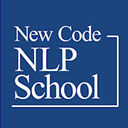������ϡ��ե�����ơ����������饤����Ȥ����̤ʾ��֤�Ƚ�ꤷ���ޡ�����Ԥ����Ȥˤ�륪�ڥ졼����ʥ롦����������Τʰ켰�Ǥ��������ξ��֤ؤκƥ��������ϡ�������ư���뤳�Ȥˤ�ä�ã������ޤ��������Υ��åƥ��ˤϡ��ʲ��Τ褦�ʣ��ĤκǤ���פ��ѿ�����Ϳ���Ƥ��ޤ���
�����������Υ����ߥ�
������������������֤ν����

������ϡ�����Ū�ʥ���֥졼�����ǽ�Ϥ�����ˤ��Ƥ��ޤ����������äˡ��ɤ�����̤ʾ��֤Υ�����˴ؤ��Ƥ⡢���Τʥݥ���ȡʻ����ˤǥ������Ω���뤿��ˤϡ����줬����������֤������ġ����饤����Ȥο���Ū��ħ�˽�ʬ��ɽ������Ƥ��뤫�Ф��뤿��ˡ��ե�����ơ������ϡ��γФα������������Ƥ��뤳�Ȥ�ɬ�פȤʤ�ޤ���
�ե�����ơ������ϡ������ξ��֤�ɽ�����줿���ηи��ˤĤ��ơ����饤����Ȥ���ΰռ�Ū�������ԤĤ櫓�ˤϤ����ޤ�����ϡ������ξ��֤�������Ū��ħ�˽�ʬ��ɽ������Ƥ��뤳�Ȥȡ����饤����Ȥ���ʬ��ɽ������Ƥ��뤳�Ȥ�ռ�Ū��ǧ�����뤳�ȤȤδ֤ˡ����֤Τ��줬�����뤳�Ȥ����ʤ�����Ǥ������äơ�������˴ؤ�����ۤ���������ϡ����٤Ƥ�NLP�ȥ졼�ʡ�����ȯ���ƿȤˤĤ���٤���ΤǤ��ꡢ�ڤäƤ��ڤ��ä��ʤ����ܼ�Ū�˵�Χ��ɬ�פȤ����ư�Ǥ���
������Ȥ���NLP�Υƥ��Υ������ΰ����Ϥ��뤳�Ȥˤ�äơ��ե�����ơ������ϡ����饤����Ȥ������Ƥ�����֤��������̣���Ƥ��뤫�ˤĤ��ơ�������ɤ���ɬ�������ʤ��ޤޡ����饤����Ȥ�������̣�������֤�dz��Ѥ�����Ū�Ǽ�äƤ������Ȥ��Ǥ���褦�ˤʤ�ޤ����ޤ��������ߥ�Ŭ�ڤ˼�줿�����ˤ�äơ��ե�����ơ������ϡ����衢ͭ�Ѥʻ��ˡ����ξ��֤�Ƶ�ư���뤳�Ȥ��Ǥ��ޤ����������Ѥळ�Ȥˤ�ꡢ��ۤ����ե�����ơ������ϡ������Υ�����ŵ��Ū�ˤϥ�������Ū�������Ρ������ü�ʼ���Υ����ˤ�����Ū�ʥ����������Ū�Ǥ��뤳�Ȥ�ȯ�����뤳�ȤǤ��礦������ˡ��ȥ졼�ʡ��ϡ�����¸�ߤ����ǡ����饤����ȤˤȤä�������Τ���Υ����ˤʤ�Ȥ���ǧ���˸����äư���Ƨ�߽Ф����Ȥ⡢��Ω����������Ǥ���
�ʥ������������

Anchoring is a specific set of operational skills by which a facilitator identifies and marks a special state in the client. The re-accessing of the state is achieved through the triggering of the anchor. The setting of the anchor involves two essential variables:
��1. the timing of the anchor
��2. the purity of the state being anchored
Anchoring presupposes a fundamental competency in calibration and particular, the anchoring of any particular state will require that the facilitator has adequate sensory acuity to detect when the state isn fully expressed in the client physiologically in order to set the anchor at that precise point.
The facilitator cannot wait for a conscious report from the client as to their experience of when the state is most expressed as there is an unavoidable lag time between the full physiological expression of the state and the awareness consciously by the client that it is fully expressed. Thus, excellent skill at anchoring is an inherently honest activity to be developed by all NLP trainres.
The mastery of this portion of the technology �� anchoring �� allows the facilitator to capture for later use, any state of interest displayed by the client WITHOUT any necessity for ��understanding�� what the state the client is displaying means. Yet, a well-timed anchor allows the facilitator to re-trigger such state when useful in the future. With extended practice, the excellent facilitator will discover that natural anchor ��a very special class of anchors �� typically iconic in nature�� are more effective than artifical ones and further, discrete anchoring is a step toward recognition that the facilitator is an anchor for excellence for the client by his or her presence.��John Grinder��

NLP��Ʊ�ϻϼԥ�������������ǧ�깻
�˥塼������NLP��������

������������2022/05/12
�����������Υ����ߥ�
������������������֤ν����

������ϡ�����Ū�ʥ���֥졼�����ǽ�Ϥ�����ˤ��Ƥ��ޤ����������äˡ��ɤ�����̤ʾ��֤Υ�����˴ؤ��Ƥ⡢���Τʥݥ���ȡʻ����ˤǥ������Ω���뤿��ˤϡ����줬����������֤������ġ����饤����Ȥο���Ū��ħ�˽�ʬ��ɽ������Ƥ��뤫�Ф��뤿��ˡ��ե�����ơ������ϡ��γФα������������Ƥ��뤳�Ȥ�ɬ�פȤʤ�ޤ���
�ե�����ơ������ϡ������ξ��֤�ɽ�����줿���ηи��ˤĤ��ơ����饤����Ȥ���ΰռ�Ū�������ԤĤ櫓�ˤϤ����ޤ�����ϡ������ξ��֤�������Ū��ħ�˽�ʬ��ɽ������Ƥ��뤳�Ȥȡ����饤����Ȥ���ʬ��ɽ������Ƥ��뤳�Ȥ�ռ�Ū��ǧ�����뤳�ȤȤδ֤ˡ����֤Τ��줬�����뤳�Ȥ����ʤ�����Ǥ������äơ�������˴ؤ�����ۤ���������ϡ����٤Ƥ�NLP�ȥ졼�ʡ�����ȯ���ƿȤˤĤ���٤���ΤǤ��ꡢ�ڤäƤ��ڤ��ä��ʤ����ܼ�Ū�˵�Χ��ɬ�פȤ����ư�Ǥ���
������Ȥ���NLP�Υƥ��Υ������ΰ����Ϥ��뤳�Ȥˤ�äơ��ե�����ơ������ϡ����饤����Ȥ������Ƥ�����֤��������̣���Ƥ��뤫�ˤĤ��ơ�������ɤ���ɬ�������ʤ��ޤޡ����饤����Ȥ�������̣�������֤�dz��Ѥ�����Ū�Ǽ�äƤ������Ȥ��Ǥ���褦�ˤʤ�ޤ����ޤ��������ߥ�Ŭ�ڤ˼�줿�����ˤ�äơ��ե�����ơ������ϡ����衢ͭ�Ѥʻ��ˡ����ξ��֤�Ƶ�ư���뤳�Ȥ��Ǥ��ޤ����������Ѥळ�Ȥˤ�ꡢ��ۤ����ե�����ơ������ϡ������Υ�����ŵ��Ū�ˤϥ�������Ū�������Ρ������ü�ʼ���Υ����ˤ�����Ū�ʥ����������Ū�Ǥ��뤳�Ȥ�ȯ�����뤳�ȤǤ��礦������ˡ��ȥ졼�ʡ��ϡ�����¸�ߤ����ǡ����饤����ȤˤȤä�������Τ���Υ����ˤʤ�Ȥ���ǧ���˸����äư���Ƨ�߽Ф����Ȥ⡢��Ω����������Ǥ���
�ʥ������������

Anchoring is a specific set of operational skills by which a facilitator identifies and marks a special state in the client. The re-accessing of the state is achieved through the triggering of the anchor. The setting of the anchor involves two essential variables:
��1. the timing of the anchor
��2. the purity of the state being anchored
Anchoring presupposes a fundamental competency in calibration and particular, the anchoring of any particular state will require that the facilitator has adequate sensory acuity to detect when the state isn fully expressed in the client physiologically in order to set the anchor at that precise point.
The facilitator cannot wait for a conscious report from the client as to their experience of when the state is most expressed as there is an unavoidable lag time between the full physiological expression of the state and the awareness consciously by the client that it is fully expressed. Thus, excellent skill at anchoring is an inherently honest activity to be developed by all NLP trainres.
The mastery of this portion of the technology �� anchoring �� allows the facilitator to capture for later use, any state of interest displayed by the client WITHOUT any necessity for ��understanding�� what the state the client is displaying means. Yet, a well-timed anchor allows the facilitator to re-trigger such state when useful in the future. With extended practice, the excellent facilitator will discover that natural anchor ��a very special class of anchors �� typically iconic in nature�� are more effective than artifical ones and further, discrete anchoring is a step toward recognition that the facilitator is an anchor for excellence for the client by his or her presence.��John Grinder��

NLP��Ʊ�ϻϼԥ�������������ǧ�깻
�˥塼������NLP��������

������������2022/05/12

















































































